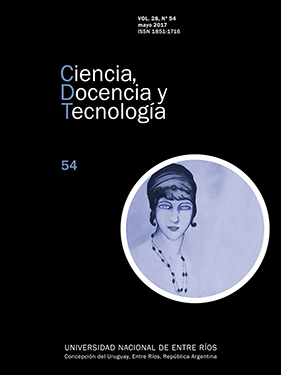Abstract
Since the beginning of the XXI century, Argentine government changed the public policy linked to the National Vaccination Schedule (NVS) by adding new vaccines. Upon incorporation of biological techniques since mid-80s, the global pharmaceutical industry became interested in vaccine production. In this context, the vaccine industry has changed the productive innovative frame, thus giving way modern vaccines. As a result, local production has faced a technical and organizational gap, the loss of productive capabilities has worsened, and hence production has lost importance as a supplier of vaccines to the NVS. In parallel, local vaccine supply shows a strong import bias. This paper analyzes changes in central countries, and its effect on Argentine policy. An elite of pharmaceutical companies controls the production of modern vaccines globally as well as the provision of vaccines in Argentina.
References
Coriat, B . 2002. Du “super 301” aux trips: La “vocation imperiale” du nouveau droit americain de la propriete intellectuelle, Revue-d’Economie-Industrielle. 2do Trimestre 2002 Nº99: pp. 179-90
Coriat, B; Orsi, F; Weinstein, O. (2003) Does biotech reflect a new science-based innovation regime?. Industry and Innovation, Volume 10, Number 3, 231–253,
Coriat, B; Orsi, F. 2007. Derechos de Propiedad Intelectual e Innovación. DOCUMENTOS PARA SEMINARIOS Nº 12 Documento para el seminario Propiedad intelectual e innovación, Buenos Aires, 3 al 6 de diciembre 2007. CEIL, PIETTI, CONICET.
Corvalán, D 2010. Estudios sobre los Desarrollos Internacionales de la Biotecnología Industrial: Vacunas Humanas. http://www.ceur-conicet.gov.ar/imagenes/ PICTD to8vacunas1.pdf
Corvalán, D. 2013. Capacidades Tecnológicas Locales en la Producción de Vacunas. Aprendizaje desde el desarrollo de la vacuna a celular contra la tos convulsa. En corrección
Dewan, S 2013. Global Markets for Vaccine Technologies. BCC Research. http://www.bccresearch.com/market-research/pharmaceuticals/vaccine-technologies-phm014e.html
Di Liscia; M.S. 2011. Marcados en la Piel: Vacunación y viruela en Argentina (1870 – 1910). Ciéncia y Saúde Coletiva, 16(2): 409-422.
Federación Internacional de la Industria del Medicamento - FIIM. (2008) “El valor de las vacunas, dos siglos de avances médicos sin precedentes” en:
http://www.ifpma.org/documents/NR9764/ 2008_05_20_ IFPMA.
Gutman, G; Lavarello, P. 2010. Desarrollo Reciente de la Moderna Biotecnología en el Sector de Salud Humana. Proyecto: “Potencialidades de la Biotecnología para el Desarrollo Industrial en Argentina” CEUR – CONICET.
Hamdouch, A; Depret, M. 2001. La nouvelle economie industrielle de la pharmacie. Structures industrielles, dynamique d‘innovation et stratégies commerciales. Editorial Elsevier.
Homma, A.; di Fabio, JL y de Quadros, C. 1998. Los laboratorios públicos productores de vacunas: el nuevo paradigma. Revista Panamericana de Salud Publica vol. 4. n.4 Washington Oct. 1998.
Hozbor, D. Mooi, F. Flores, D. Weltman, G. Bottero, D. Fossati, S. Lara, S. Gaillard, M. Pianciola, L. Zurita, E. Fioriti, A. Archuby, D.Galas, M. Binsztein, N. Regueira, M. Castuma, C. Fingermann, M. Graieb, A. 2009. Pertussis epidemiology in Argentina: trends over 2004 to 2007, J Infect (2009)doi:10.1016/j.jinf.2009.07.014
Kaddar,M. 2012 Global Vaccine Market Features and Trends.
http://who.int/influenza_vaccines_plan/resources/session_10_kaddar.pdf
Lopez, M; Mallorquín, P; Pardo, R; Vega, M 2004. Vacunas de nueva generación, informe de vigilancia tecnológica. Fundación Española para el desarrollo de la investigación en genómica y proteómica. Fundación general de la Universidad Autónoma de Madrid. En: http://www.argenbio.org/adc/uploads/pdf/VACUNAS.pdf
Micelli, I. 2004. La Inversión en Vacunas. Medicina (Buenos Aires), Volumen 64- N°2: pp.176 - 178
OMS, UNICEF, Banco Mundial. 2010. Vacunas e inmunización: situación mundial, tercera edición. Ginebra, Organización Mundial de la Salud, 2010. http://whqlibdoc.who.int/publications/2010/9789243563862_spa.pdf
Orsi, F; Coriat, B. 2005. Are ”Strong patents” beneficial to innovatibe activities? Lessons from the genetca testing for breast cancer controversies. Industrial and Corporate Change. Volume 14, Number 6, pp 1 – 17.
Ramacciotti, K. 2006. Política y enfermedades en Buenos Aires, 1946 – 1953. Asclepio. Revista de la medicina y de la Ciencia, Madrid. Vol LVIII, N° 2, Julio-Diciembre de 2006, pp 115 – 138
Rodriguez; M. 2012. Bordetella Pertussis, Un patógeno humano que ha sobrevivido a décadas de vacunación masiva. Asociación Argentina para el progreso de la ciencia. Ciencia e Investigación, Divulgación. Tomo 62, N° 2
Roggero, L. 2006. La Salud Pública y las Vacunas. Calendario Nacional de Vacunación. Departamento de Bioquímica Clínica. Area Tecnología en Salud Públca. Asignatura en Salud Pública
Stecher D, Gaiano A, Biscayart C, Gentile A, Ayala SG, López E, Bonvehí P, Yedlin P, Janusz C, Vizzotti C. 2014. National Immunization Commission: strengthening evidence-based decision making in Argentina. Vaccine. 2014 Apr 1;32(16):1778-80.
Temporão, J. 2004 ENSP/FIOCRUZ. I Seminário sobre o complexo Industrial da Saúde/BNDES.A Indústria de Vacinas: O Brasil no Contexto Mundial
Tregnaghi; M. 2002. Presente y Futuro de las vacunas. Arch. argent. pediatr 2002; 100(1)
UNICEF 2002 Vacunas para la infancia peligra el abastecimiento. Marzo 2002. UNICEF, División de Comunicaciones.
http:⁄⁄www.unicef.org/publications/index_4442.html).
United Nations. 2010. Recommendation to the Executive Board Extension of the Vaccine Independence Initiative United Nations Children’s Fund Executive Board Second regular session 2010 7-9 September.
Walsh, G. 2006. “Biopharmaceutical benchmarks” Nature Biotechnology, vol.24 Nro 7. pp. 769-778.
The authors retain the copyright and grant the journal the right to be the first publication of the work, as well as licensing it under a Creative Commons Attribution License that allows others to share the work with an acknowledgment of the authorship of the work and publication initial in this magazine. All content is published under the Creative Commons 4.0 international license: Attribution-Non-Commercial-Share Alike.

